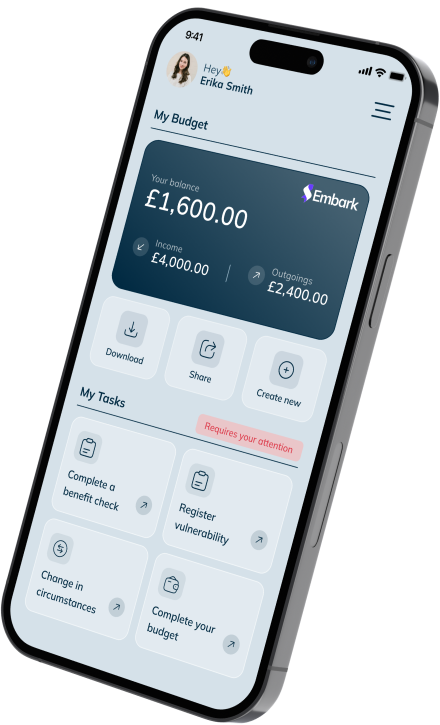As the new financial year takes hold, UK households will be re-evaluating their monthly income and expenditure budgets, looking for ways to cut costs to meet their monthly bills, in the on-going cost-of-living crisis. According to a recent article from NimbleFins “the average total UK household debt (excluding mortgages) has increased 82% over the last ten years.” Firms in the energy, water and broadband/mobile/phone will once again need to re-evaluate their processes to find more resourceful ways to support vulnerable people to offer fair affordability assessments. We delve into the specifics of these hikes, identify the demographics most affected, explore the broader implications on household affordability, uncover unforeseen consequences, offer practical coping strategies, and discuss potential policy interventions.
1. Understanding the April 2025 Bill Hikes
- Energy Bills: The energy price cap, regulated by Ofgem, will increase by 6.4%, raising the average annual energy bill to £1,849. This translates to an additional £9.25 per month / £111 annually for a typical household.
- Council Tax: Nearly 88% of upper-tier councils in England plan to implement a 4.99% increase in council tax. Some areas, such as Bradford and Newham, are imposing hikes as high as 9.99% due to severe funding shortages.
- Water Bills: Water charges are anticipated to rise by 36%, adding to the financial burden on households.
- Broadband and Mobile Contracts: Customers with contracts initiated before April 10, 2024, will experience a 6.4% increase in their broadband and mobile bills, reflecting inflationary adjustments.
These increases are primarily driven by factors such as inflation, escalating wholesale energy prices, and local government funding deficits.
2. Who Is Hit the Hardest?
The financial impact of these bill hikes is not uniform across all demographics:
- Low-Income Households: Rising costs disproportionately affect those on lower incomes, who spend a larger share of their earnings on utilities and essential services.
- Renters vs. Homeowners: Renters may face indirect cost increases as landlords pass on higher expenses, while homeowners directly shoulder the burden of rising bills.
- Small Businesses: Independent enterprises, especially those operating on tight margins, will struggle with increased operational costs, potentially leading to reduced profitability or closures.
- Regional Disparities: Areas like Bradford, Somerset, and Birmingham are experiencing council tax hikes up to 9.99%, significantly higher than the national average, thereby intensifying regional inequalities.
3. The Ripple Effect on Household Affordability
The cumulative effect of these rising costs extends beyond immediate financial strain:
- Budget Reallocation: Households may need to cut discretionary spending on leisure, entertainment, and non-essential items to accommodate higher utility bills, ultimately effecting small businesses.
- Increased Financial Stress: The pressure of managing escalating expenses can lead to heightened stress and anxiety among individuals and families.
- Rising Debt Levels: To cope with increased costs, some households might resort to credit, leading to higher debt levels and potential long-term financial instability. An ONS survey saw that 56% of adults who saw an increase in their cost of living in January 2025, 14% reported they were using more credit than usual to support themselves.
4. Fresh Perspectives: Unseen Consequence
- Strain on Support Services: An uptick in living costs could lead to increased reliance on food banks and community assistance programs, stretching these resources thin.
- Shifts in Consumer Behaviour: Consumers might gravitate towards second-hand markets, bulk purchasing, or DIY solutions to mitigate costs, altering traditional retail patterns.
- Digital Inequality: Escalating broadband costs could widen the digital divide, making internet access less affordable for low-income households and hindering their access to essential online services.
5. Coping Strategies: Practical Advice for Households
To navigate these financial challenges, households can consider the following measures:
- Energy Efficiency: Implementing energy-saving practices, such as using energy-efficient appliances and improving home insulation, can reduce consumption and lower bills. Read how we support Octopus Energy and how they support customers with their electric blanket scheme.
- Budgeting Tools: Utilising budgeting apps and financial planning tools can help track expenses and identify areas for cost-cutting.
- Government Assistance: Exploring available government support, including grants, benefits, and council tax relief programs, can provide financial relief.
6. Policy and long-Term Solutions
Addressing the root causes of these financial pressures requires systemic interventions:
- Adequate Funding for Local Services: Ensuring that councils receive sufficient funding can prevent the need for steep tax hikes and maintain essential public services.
- Social Tariffs: Implementing fair pricing models for utilities can protect vulnerable households from disproportionate financial burdens. You can read more about how we supported Thames Water with supporting their customers on the WaterHelp Social Tariff scheme.
- Investment in Renewable Energy: Promoting renewable energy sources and enhancing energy efficiency can lead to sustainable reductions in household energy costs over time.
The impending increases in household bills present significant challenges for many UK households. Firms need to evaluate how they can best support more people becoming involved in debt and what resources are available that can support them.
Paylink can help individuals understand their financial position and help them pursue their financial objectives. We do this through our Embark application – our innovative I&E tool, which helps consumers understand their current income and expenditure. Firms can use Embark in a variety of pathways to support their customer including: agent-led, customer invite or customer self-serve, we have numerous ways to support businesses and individuals manage their affordability assessments.








